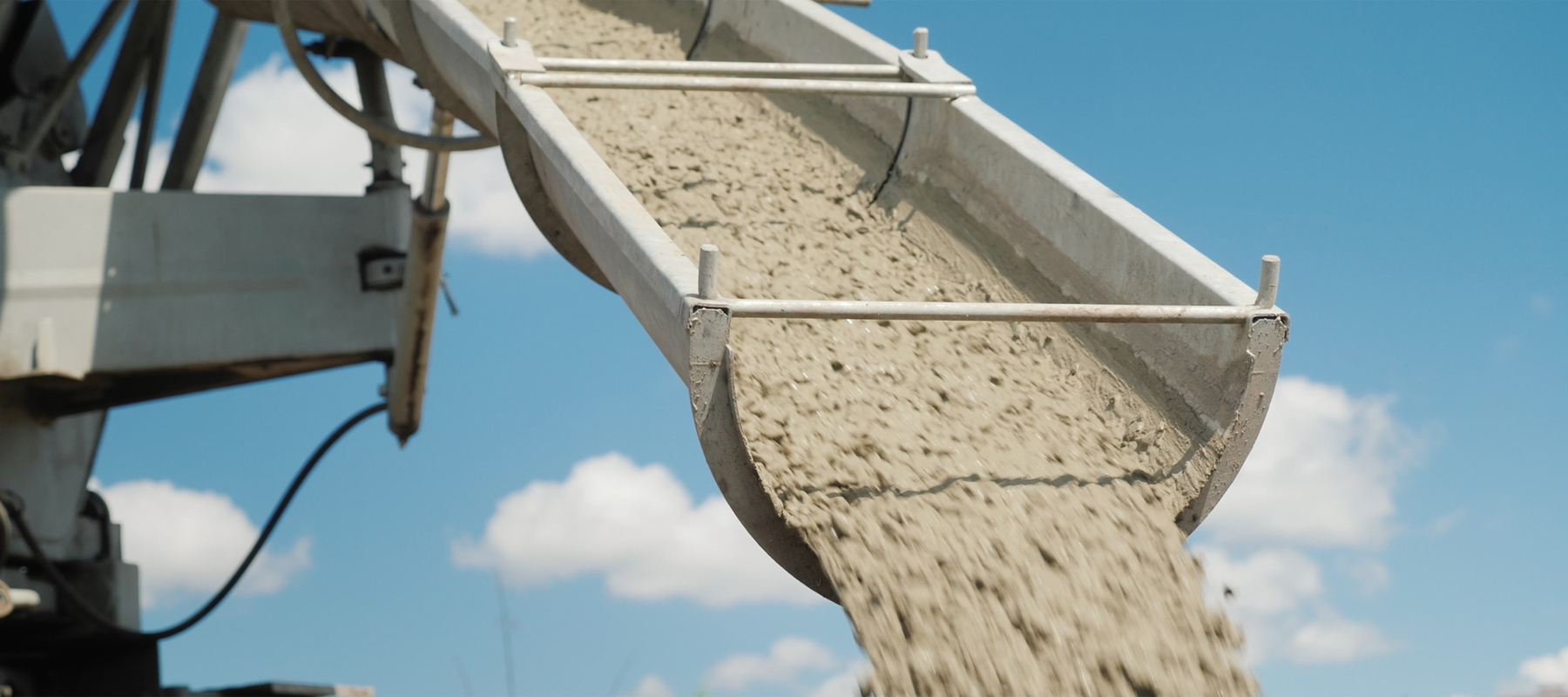How Much Does Concrete Delivery Cost?
Last Updated: June 02, 2023

Fact Checked By: Ryan Maguire
On This Page
Summary: Concrete Delivery Prices Per Yard #
On average, concrete delivery costs $120 to $200 per cubic yard. Companies usually charge a standard delivery charge of $60 to $200. Customers typically pay between $1,200 and $1,600 for a truckload of concrete.

Having liquid concrete delivered in a cement mixer truck, whether you need the material for a driveway, patio, floor, or some other construction project, will save you the hassle of mixing concrete onsite. This buying guide breaks down concrete delivery cost factors and what you should know before scheduling a truckload.
How to Calculate a Concrete Delivery #
Concrete order sizes are expressed in cubic yards, which is a 3-dimensional measurement (length x width x height/depth). To determine how many cubic yards of concrete you'll need, start with the square footage (a two-dimensional measurement) of the area. This is done by multiplying the length by the width. Once you have that figure, multiply it by the depth (or thickness) of the area to be filled with concrete to arrive at the number of cubic feet. Finally, divide the number of cubic feet by 27 (there are 27 cubic feet in a cubic yard). Here's an example of how to figure out how many cubic yards of concrete are needed for a project area that's 10 feet wide x 10 feet long x 1.5 feet deep:
- 10 feet x 10 feet x 1.5 feet= 150 cubic feet
- 150 cubic feet/27 = 5.55 cubic yards
Average Concrete Delivery Prices By Location: #
| City or State | Zip Code | Average Price Paid |
|---|---|---|
| Massachusetts | Statewide | $3,652 |
| California | Statewide | $2,688 |
| Los Angeles, CA | 90001 | $3,068 |
| New York City | 10001 | $3,302 |
| Philadelphia, PA | 19019 | $4,212 |
| Chicago, IL | 60629 | $3,078 |
| Houston, TX | 77084 | $6,927 |
Concrete Delivery Costs #
- Bearing in mind the cost factors discussed above, you can expect to pay roughly $120 to $200 per cubic yard for concrete delivery. For 5.5 cubic yards, that works out to $660-$1,100. Use the cubic yardage for your specific project to get a more accurate estimate.
- A truckload of concrete is about 10 cubic yards and will cost between $1,100 and $1,500.
- According to data compiled by HomeAdvisor.com, customers nationwide spend an average of $1,500 to $6,700 on concrete delivery.
- For DIY concrete work, you might pay around $100 per cubic yard, plus the cost to rent a cement mixer.
Concrete Pouring Considerations #
- When ordering concrete, it's a good idea to request a little bit more than you actually need. If you come up short and need a second truckload, this will add significantly to the project cost.
- Ordering a little extra concrete to be on the safe side usually means there's some excess. To avoid wasting the leftover concrete, have a plan for it, such as a walkway or sidewalk.
- In most cases, the cost to order premixed concrete includes only the delivery and pouring of the project. In other words, don't assume that the driver will help you finish the concrete. Depending on the size of the project, you'll want to have a helper (or two or three) on hand to help with finishing work.
- When it comes time to unload the concrete at the job site, a cement truck's chutes, and/or a wheelbarrow or concrete buggy are usually sufficient. Some jobs, however, require a separate pump truck, which will incur additional chargers.
- The cost of concrete delivery depends on a number of factors, including the amount and quality of the concrete, trip distance, local material and labor charges, the current price of gasoline, and whether your location presents any delivery challenges (i.e. a long, steep driveway, impassible road, or roadway weight limitations). Smaller loads (aka "short loads", usually defined as less than 4 or 5 cubic feet, cost more than larger loads. For very small loads, there might be a minimum charge of 2 or 3 yards.
How to Prepare Your Site for Concrete Delivery #
The successful completion of any job requires ample preparation. For starters, you need the right supplies and a thorough understanding of how to do the job. Projects that include concrete have an additional requirement if you want a smooth finish: timing. The moment you begin mixing your concrete, the clock starts ticking. It is essential that you prepare the site before receiving your concrete delivery.
Creating a Solid Base for Concrete #
A concrete finish is only as strong as the base that supports it. Best practices depend largely on soil conditions and climate in your area, but experts recommend a compactable base measuring between 4" and 6" for most projects. However, the reason for your slab also plays a role. For example, if you're pouring a driveway intended for heavy vehicles and are in an extremely cold climate, your base may need to be as deep as 12" to guard against cracking.
To determine your base needs, explain your project and soil conditions to your concrete supplier. He or she can advise on base depth.
Ideal Soil and Moisture Conditions #
Think of the base under your concrete as a pair of shoes. You need the right shoe for the right activity. If you plan to go running, you don't put on a pair of flip-flops. If you're getting ready to dance a tango, you don't lace up a pair of hiking boots. The same way your shoes support your activity, your base supports the slab as well as everything that happens on top of it.
To handle these loads, soil needs the right density level. You may need to replace or reinforce natural soil conditions for greater strength and compaction. Proper density may also require moisture control. If the base is too dry, the soil won't compact properly. To test the moisture level, squeeze a handful of your base material. Ideally, the soil will hold its shape. If it crumbles, though, you need to add water.
Be careful not to add too much water, as this also leads to poor compaction. For every inch or so of base you add (also known as "lift"), spray it with water, being careful not to add so much that it pools.
Proper Soil Compaction #
After moisture, compaction is the next step in preparing the base for your concrete slab.
There are numerous types of compactors available, categorized by the movements they use to compact soil. Methods include impact, kneading, and vibrations. Compactor sizes range from walk-behind push units to self-propelled riders.
- Kneading and pneumatic tire rollers are ideal for clays, silts, and other fine-grained soils
- Vibratory drum rollers are effective on more coarse, granular soils
Manufacturers rate vibratory compactors on two metrics: amplitude and frequency. Amplitude measures the force applied and frequency refers to the number of vibrations per minute.
Please note that you nearly always need to compact your base in stages. The amount of lift you can or should compact varies according to the material and compactor type. However, general rules include compacting 8" or less when working with clay soils and 12" or less with sandy types. The top 6" of soil need a greater compaction level.
The Concrete Form or Framework #
Now that your subgrade is prepared, you can set your forms. Attach them to stakes for easy removal after the concrete finishes curing.
Before adding the final lift to your base, set the forms to the necessary height. To do so, install two screws at the ends of your boards and stretch a string between them. The string acts as a guide in two ways: to get the proper base height and keep your form boards straight.
Set your forms to the proper grade for drainage, which is a minimum of 1/8" for every foot of concrete. Try to follow the natural grade of the property. Finally, make sure the framework forms clean corners where the boards meet.
Ready to Pour #
As we said above, concrete work is all about timing. Before the truck arrives (if your concrete is being delivered) or you begin mixing your concrete, everything needs to be ready.
Check your forms once more to make sure they're well-braced, straight, and level. Gather all supplies, including at least two professional-grade wheelbarrows (and hopefully a couple of strong, willing assistants).
Determine the best route for the truck and try to schedule delivery on an ideal weather day. Too hot causes the concrete to harden too quickly; you won't even have time to smooth it out. Rain, of course, ruins the surface. If you wake up to dark, ominous clouds, reschedule your delivery.
Resources:
